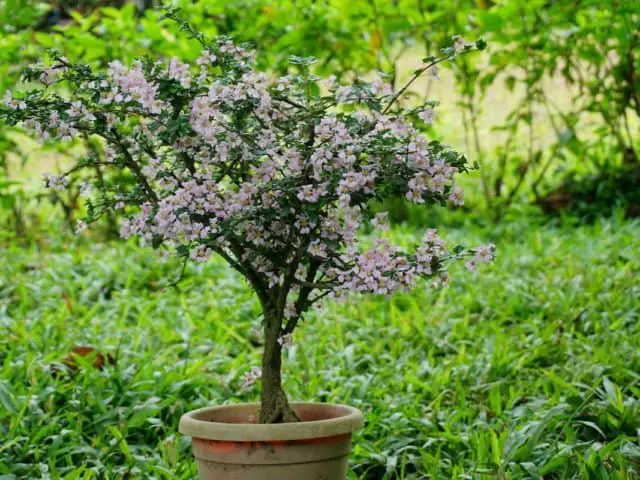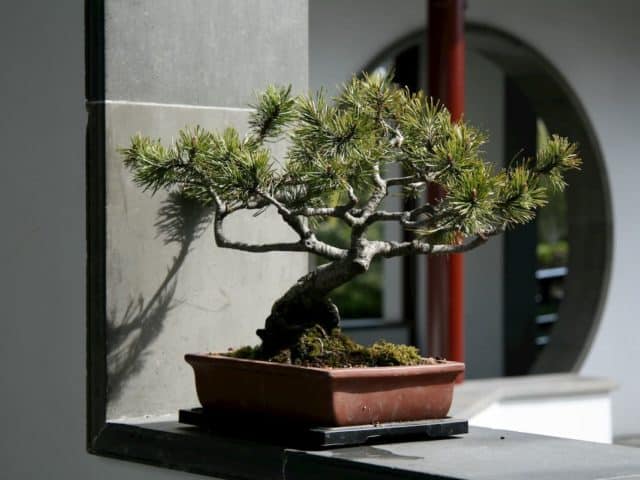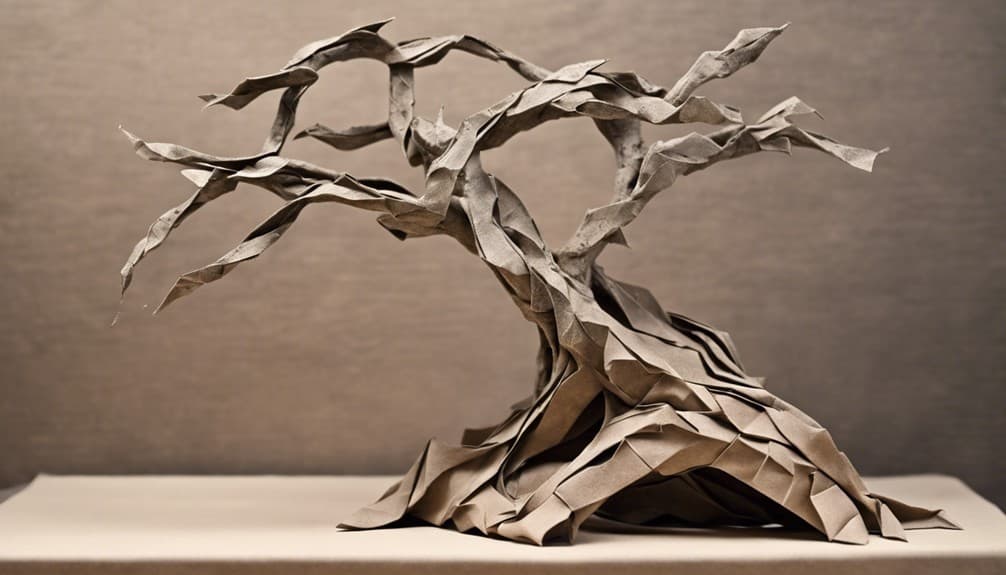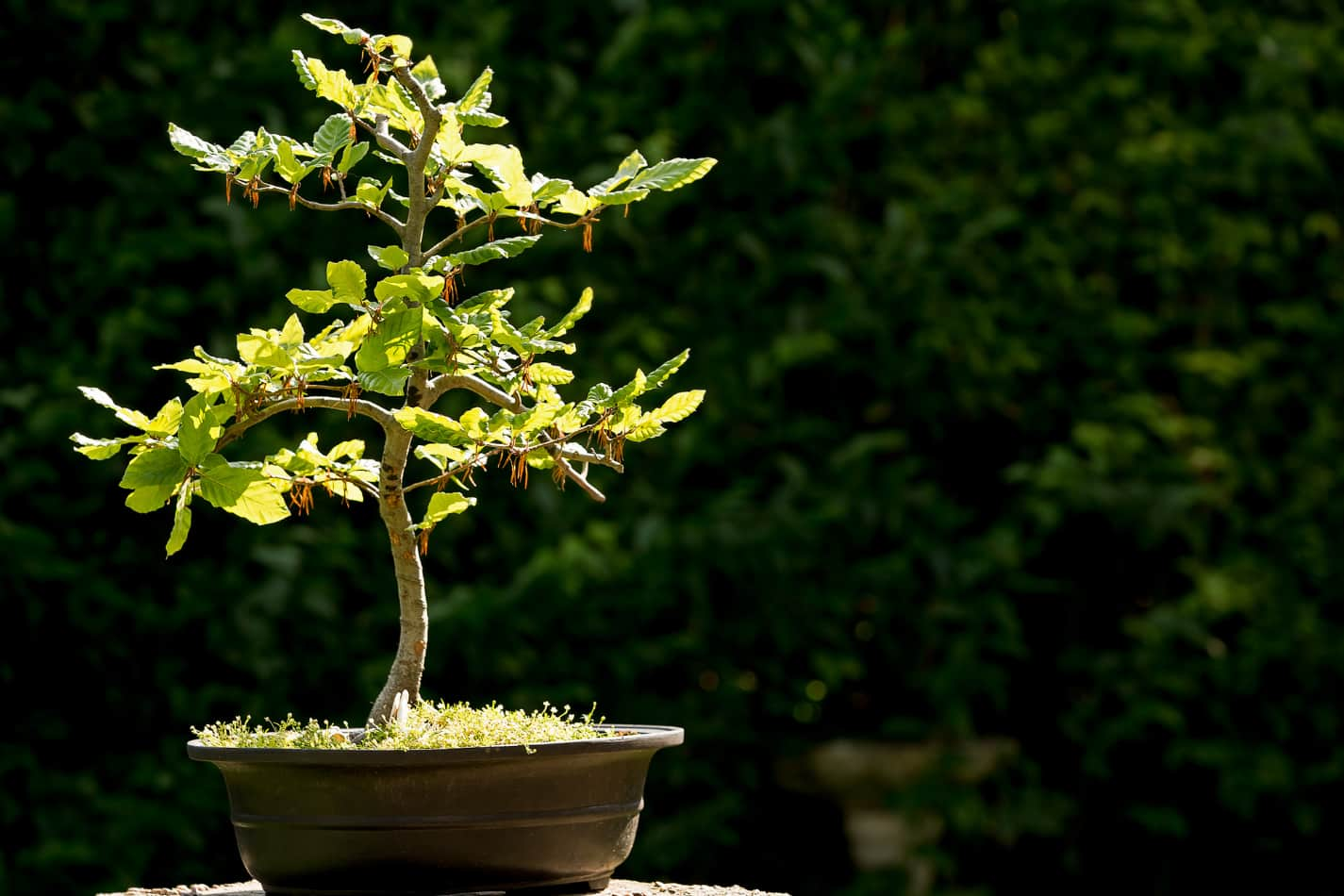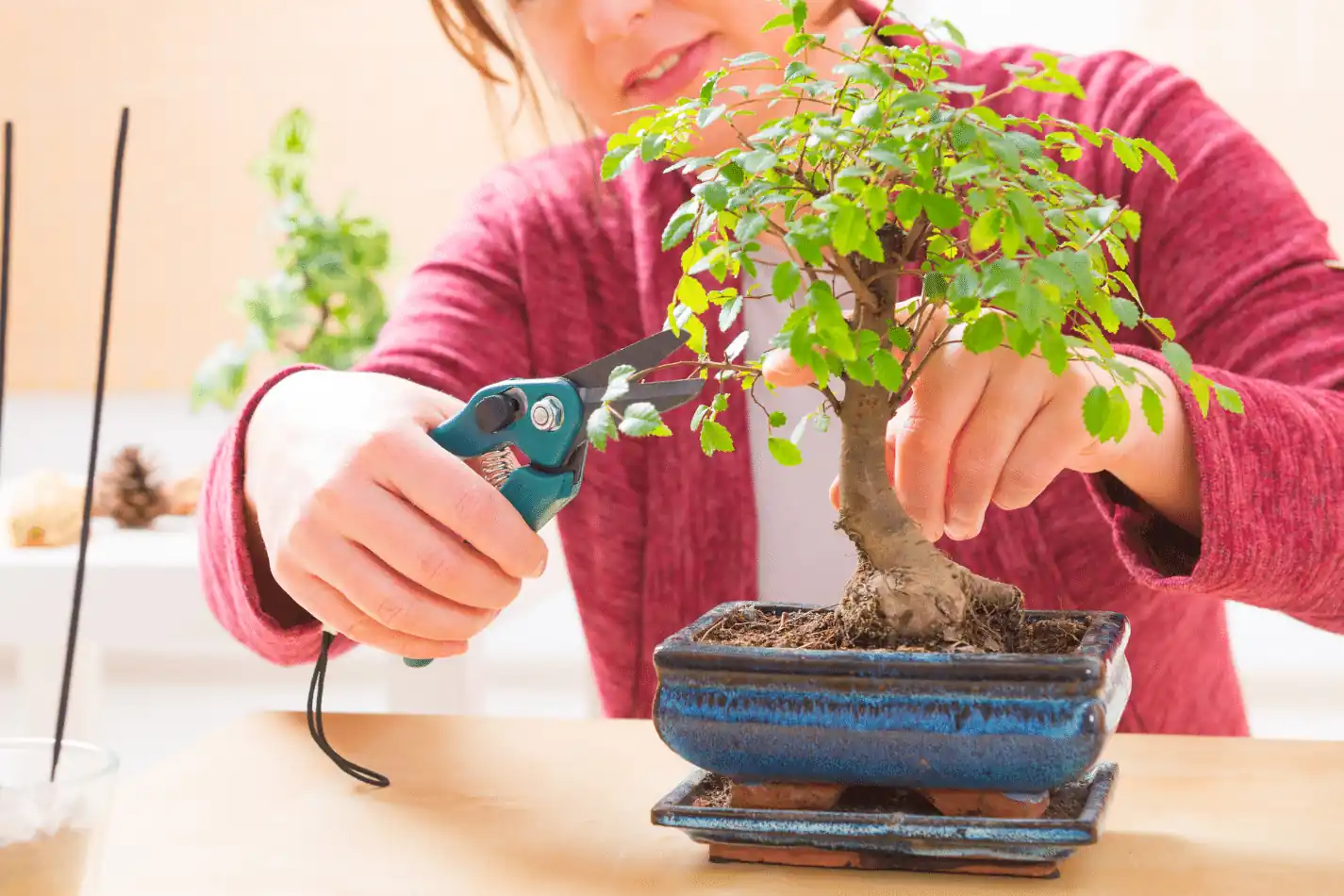Indoor Bonsai trees are the ornaments to adorn your premises. But, not all species of Bonsai grow well indoors. So, choosing the best Bonsai tree for your home is important.
Among all indoor-grown species these are the best for indoor growth and longevity these are my favorites:
- Golden Hawaiian Umbrella Bonsai
- Baby Jade Bonsai
- Flowering Brazilian Rain Bonsai
- Flowering Dwarf Sweet Acacia Bonsai
- Green Island Ficus Bonsai
- Willow leaf Ficus Bonsai
- Chinese Elm Bonsai
- Mount Fuji Serissa Bonsai
- Flowering Brush Cherry Bonsai
You ought to have a clear idea about all these trees, their maintenance, and why enthusiasts consider them the best. To bring out the best in your indoors, we suggest you read the entire article.
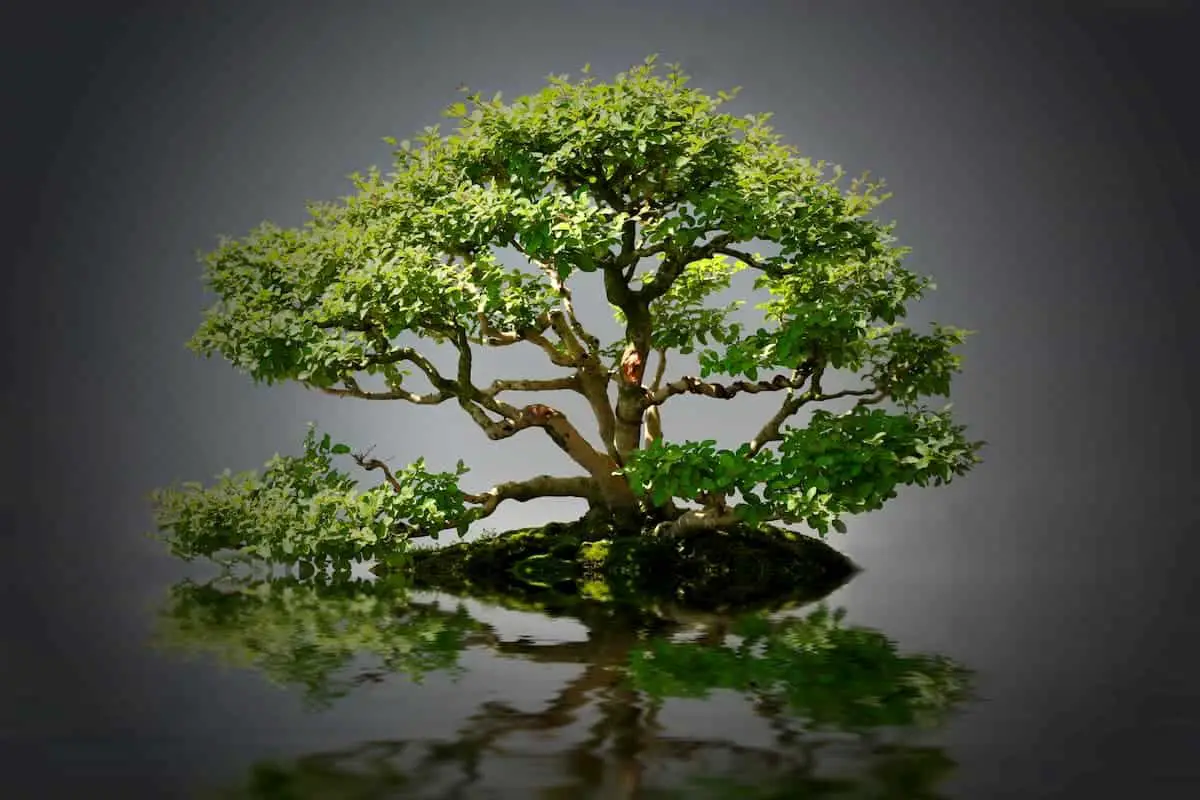
Best Bonsai Trees for Indoors Life
From the experience of various Bonsai horticulturists all over the world, the best trees have been singled out. These trees are easy to grow, look incredibly aesthetic and are very low maintenance compared to the other indoor species. The 9 best indoor Bonsai trees have been reviewed here:
Golden Hawaiian Umbrella Bonsai Tree
Just as the name says, it looks like an umbrella. It is the most beautiful umbrella your money can buy! If you are a Bonsai beginner, you can easily start with this tiny beauty.
This species originally comes from the Hawaiian Islands and is best suited to tropical or subtropical weather conditions.
This is one of the dwarf varieties with very small leaves. They have shallow roots and, in some plants, the roots are aerial. They hang down from the branches to reach the soil giving it a mangrove-like appearance.
Roughly, they can attain a height of about 3 feet. With the thick canopy of leaves shaped like an umbrella and red berries all over, it looks breathtaking!
Golden Hawaiian Umbrella Bonsai Preferred Weather Conditions
The tree grows best in temperate areas. Temperatures above 60 degrees are preferred. But if you live in a very hot place, you can expose the tree to the bright sun in gradual doses. Try to get it adapted to your weather. Also, when the weather cools down, try to keep your Bonsai warm.
Golden Hawaiian Umbrella Bonsai Sunlight Requirements
The beauty of the tree lies in its unique umbrella shape, created by the thick canopy of small green leaves. If you want your Bonsai to have small leaves, it is always recommended to grow it in bright sunlight.
This over nourishment will lead to growing small leaves. But the size is entirely your choice.
Golden Hawaiian Umbrella Bonsai Soil and Feeding
The plant grows well in a well-combined soil of about 4 or 5 aggregates. While giving composts, be sure to use less Nitrogen as it will facilitate the growth of leaves. Water it little and never let the soil dry out, that’s the key!
Golden Hawaiian Umbrella Bonsai Pruning and Repotting
Choose a small pot with sufficiently large holes to allow drainage. Other steps are just the same as for any other Bonsai.
Repotting can be done once in 2-3 years. Pruning must be done in intermittent periods to ensure the umbrella shape throughout the year.
So, with a little care and maintenance you can easily grow the Golden Hawaiian Umbrella Bonsai. They were really popular in old times and are still among the top picks.
The key is to maintain its cleanliness and proper feeding – just the right amount it needs. Grab your Hawaiian beauty right away!
Baby Jade Bonsai Tree
Jades are the lowest maintenance Bonsai. They turn out to be your favourite kids who are happy even with the least watering and feeding. They don’t ask for much and are amazing for indoor growth.
These miniatures have egg shaped leaves with moderately thick trunks and branches. The Japanese passed it on to their descendants.
The Baby Jade Bonsai live for many years and are the best among all. They can attain a height of 3 to 4 feet on average.
They look very aesthetic and can take any shape you want them to have.
Baby Jade Bonsai Preferred Weather Conditions
The time of growth is during Spring and it loves the weather during that season. It is well suited to any ambient environment. But it hates too cold weather. Try to keep the temperature above 45 degrees.
Baby Jade Bonsai Sunlight Requirements
No indoor plant likes to stay inside all day long. It’s not good for their health either. Baby Jades require the morning sunshine for about 3 to 4 hours, to rise and shine!
Very bright sunlight will cause the leaves to shrink and fall off; on the other hand, complete shade will make the leaves malnourished. Your Jade may turn into a deciduous tree. So ensure proper sunlight.
Baby Jade Bonsai Soil and Feeding
It only needs well-drained soil that doesn’t remain wet for too long. It hates over-watering. Check the soil with your bare hands and water only when dry.
An easy trick is to mix a little coarse sand with your soil mixture to get awesome results. Use composts in February and September; use liquid manure once or twice in between.
Baby Jade Bonsai Pruning and Repotting
Prune regularly to make the canopy denser. Jades don’t need frequent repotting as they have small roots. But if you are to change your soil or pot, you may do it whenever you want.
Baby Jade Bonsai Propagation
This is the most interesting part of Jade care. It so happens, when you sow your pruned parts in the ground or any pot, new shoots start to grow. This is so easy and so helpful. Some people also try root divisions.
With some easy basic steps, you can have the best indoor Baby Jade Bonsai tree and live long with it. Get yours today!
Flowering Brazilian Rain Bonsai Tree
Who doesn’t love flowers! If your indoor beauty is showing off some little flowers, what can be better than this! With the added pleasant smell and the pleasant view, this tree is a great choice for enhancing your indoor beauty.
As the name says, it comes from the rainforests of Brazil. They give out very pretty flowers over the dense canopy. They have small bright green leaves and little thorns on the stems, like most flowering plants.
It looks most beautiful in its 3 feet size. Looks best in small pots or trays.
Flowering Brazilian Rain Bonsai Preferred Weather Conditions
They like warm areas but they can’t tolerate too much cold weather. Fail to thrive under 32 degrees, so always try to keep it in a warm and ambient place. Indoor temperatures are good for it’s growth. They enjoy humid places.
Flowering Brazilian Rain Bonsai Sunlight Requirements
Keep it in some place, where the sunlight is not very bright. Very high-intensity sunlight is not tolerated by these species as they originate from rainforests. Don’t keep it outdoors for long.
Flowering Brazilian Rain Bonsai Soil and Feeding
They need a soil mixture that can ensure gradual release of water. Choose aggregates that provide you with this. Also, choose composts of the same kind. Do not overfeed. The soil must be able to drain properly. Water it as much as you can. It loves the rain!
Flowering Brazilian Rain Bonsai Pruning and Repotting
Prune as per your needs, how short or how thick you want it to grow. The plant needs repotting as the roots grow pretty well. Usually, repotting is done once in 4 years.
Flowering Bonsai plants have a separate fan base. They look extremely aesthetic and give your indoors the most sophisticated look. What are you waiting for!
Flowering Dwarf Sweet Acacia Bonsai Tree
Among the flowering species, this is the best choice. This will beautify your homestead gorgeously and bring out a calm and soothing atmosphere. And the added bonus is that they can produce fruits as well!
They are the complete miniature beauties! The leaves are compound, The trunk and branches are just the right sizes that looks appealing to the eyes. Over the dense canopy, the bright yellow tiny flowers look so eye-catching. The flowers give off a mesmerizing smell.
These plants also give out fruits. They have small thorns so be careful there. The leaves are a pleasant shade of sap green.
They originate from the tropical regions of the United States. A tiny plant has a height of about 2 feet on average.
Flowering Dwarf Sweet Acacia Bonsai Preferred Weather Conditions
It likes to grow in warm and humid places. Avoid letting the temperature fall below 45 degrees. Too much cold weather is not preferred by the Acacia.
Flowering Dwarf Sweet Acacia Bonsai Sunlight Requirements
It needs a good amount of sunlight so keep it near the windows if you are planning to keep it in shady places. The morning sunshine is very beneficial for the plant.
Flowering Dwarf Sweet Acacia Bonsai Soil and Feeding
As this is a flowering and fruit-producing plant, it naturally needs a great deal of nutrition. Choose soil with high nutrient content which doesn’t remain moist or dry for long. For composts, include bone meal, high nitrogen contents, Neem cake, and a good amount of liquid manure.
Flowering Dwarf Sweet Acacia Bonsai Pruning and Repotting
Prune it regularly as it can grow really fast. Roots also tend to grow quickly and come outside the pot. So repotting is necessary. Change the soil once in 2 years and then repot your plant.
What could be better than having flowers, fruits, and beauty at the same time with little effort! Buy your Sweet Acacia now!
Green Island Ficus Bonsai Tree
These species are really popular for both indoor and outdoor culture. This is also popular by the name Chinese Banyan Tree. It can be grown in Asia, Europe, North America, South America, and Australia.
Like most Banyan trees, they have bright green spindle-shaped leaves. The trunk and branches are really thick. The leaves can be oval, round, or long spindly depending on how you are growing it.
They have aerial roots like mangrove plants. Some people find this very attractive. They are very easy to grow.
Green Island Ficus Bonsai Preferred weather conditions
They originate in North America and grow well in tropical conditions. They grow best indoors in the Spring season. They can tolerate dry and cold weather but do not handle extreme conditions well. Temperatures above 50 degrees are preferred mostly.
Green Island Ficus Bonsai Sunlight requirements
They need bright sunlight. When growing indoors, avoid keeping it in the shade all day. They can handle a good amount of sunlight.
Green Island Ficus Bonsai Soil and feeding
They can grow well in the regular nursery soil or black soil. Adding a few aggregates accelerates its growth enormously. Use good compost that can ensure all nutrients are required.
They need frequent watering when they attain full size. The plant can grow into a miniature version of a Banyan tree.
Green Island Ficus Bonsai Pruning and Repotting
They require pruning and repotting a tad bit frequently. Do it once a year for better results. Some plants shed leaves for a day or two after repotting or some of the leaves may turn yellow.
Don’t be scared of it as it is just an indicator of the change in nitrogen levels.
The Green Island Ficus Bonsai are good for indoors. When they are grown with other varieties, they create a diversified look. This really enhances your indoor beauty.
Willow Leaf Ficus Bonsai Tree
They are another species from the Ficus clan. They can adapt to any weather condition and in no time become your favorite!
They have thin slender green leaves. Some are very dark and some are very light. The stem and trunks are very thick. But the branches are thin and bend easily to the shape you desire.
The plant looks best in the conventional triangular shape. It reaches a height of about 3 feet on average.
Willow Leaf Ficus Bonsai Preferred weather conditions
For their adaptive capabilities, they are the pets of many indoor Bonsai artists. But they don’t like great fluctuations in temperature. They love summer and so temperate areas are their top preferences.
Willow Leaf Ficus Bonsai Sunlight requirement
Grow them indoors alright but don’t deprive them of their favorite food – the sunlight! They enjoy the bright sunshine of summer and require an optimum amount of sunlight throughout the year.
Willow Leaf Ficus Bonsai Soil and feeding
Provide a soil mixture with good moisture-retaining capacity. They need a great deal of manure during growth periods. Keep it in humid places so the soil won’t dry out easily. Give optimum amounts of water.
Willow Leaf Ficus Bonsai Pruning and Repotting
Pruning is necessary to provide the desired shape and to encourage new growth. Use sharp tools for pruning. Repotting can be done once in 3 years. Frequent repotting is not a necessity.
Willow leaf Ficus are good choices for indoor plants. But in terms of beauty, it is not very high above on the list. Then again, choose whatever suits your climate and homestead best.
Chinese Elm Bonsai Tree
They are very popular and low-key beauties. This miniature tree is so beautiful and elegant. They hold an air of sophistication around them.
The original plants come from SouthEast Asia. They can grow really tall when grown in the ground. The Chinese Elm Bonsai has small oval-shaped leaves which have a beautiful sap green hue.
The trunks are moderately thick and vary in colors – black, brown, grey, etc. They have well-developed root systems.
Chinese Elm Bonsai Preferred Weather Conditions
As per their habitat, they like to grow in hot areas with temperatures around 60 degrees. They can’t handle great diversity in temperature or weather conditions. All in all, they have good tolerance.
Chinese Elm Bonsai Sunlight Requirements
They need high-intensity sunlight during the morning but not too high. Keeping them long in the full sun can hamper leaf growth.
The roots dry out soon and the overall plant growth is degraded. Keep in good amounts of moderate-intensity sunlight when growing indoors.
Chinese Elm Bonsai Soil and Feeding
Choose a soil mixture that fulfills all the essential criteria for Bonsai growth. Water it just the usual amount.
Using fertilizer is very important during its growth period, about once or twice a week. It grows best during the fall.
Chinese Elm Bonsai Pruning and Repotting
Prune to give it whatever shape you desire – a 3D triangle or an umbrella or whatever you want. Repotting needs to be done once in 2 years. Change the soil if necessary.
With little effort you can grow a Chinese Elm Bonsai in any part of the world, owing to its versatility. Adorn your homestead today!
Mount Fuji Serissa Bonsai Tree
This is not a very common name you come across usually. The species are rare and are still on the rise in gaining popularity.
This is a flowering plant. It is small, has tiny green leaves. The leaves vary in shape. The trunk is thick enough to support the dense canopy.
Its perfect aesthetic look is completed by the small white flowers over the top. Words can’t do justice to their beauty.
Mount Fuji Serissa Bonsai Preferred Weather Conditions
They can live indoors, in the cool, shady environment but fail to thrive under 50 degrees. But they can tolerate temperatures as high as 70 degrees. For indoor growth, these are the best species weather-wise.
Mount Fuji Serissa Bonsai Sunlight Requirements
Just like other Bonsai trees, they require the morning sunshine. Keep it in bright sunlight for like 4 to 5 hours for best results.
Mount Fuji Serissa Bonsai Soil and Feeding
Use well-draining soil and water it regularly. Mount Fuji Bonsai trees are very unforgiving in terms of watering. Don’t skip any meals or it will start shedding. Use composts at an interval of 2 to 3 months.
Mount Fuji Serissa Bonsai Pruning and Repotting
Prune to get thicker roots and shoots. Repotting can be done once in 3 to 4 years. Or you may repot your plant whenever you want to change your soil.
Although these are not so popular, they look very beautiful indoors. The flowers bear a unique fragrance and add to the glory of your homestead.
Flowering Brush Cherry Bonsai Tree
If you want to start with something easy, you have chosen the right variety. It is easy to grow and commonly available too. It gives nice flowers and on top of that, you can enjoy the tiny red cherries too! For indoors, this is definitely a great choice.
They are also popular as Eugenia Myrtifolia. They have green elliptical leaves. The trunk is hard and stout and can support the weight of the thick canopy with its flowers and cherries. The cherries are not always edible.
But in some parts of Australia, they have been reported to be edible. Know your species first!
They are called Myrtifolia because they are very tiny shrubs and do not grow to be very big. The branches are flexible and not too brittle; so, they do not break when bent for wiring.
The small powder puff-like flowers add a handful to its beauty. You can easily find them in your nearest Walmart store or on eBay or Amazon.
Flowering Brush Cherry Bonsai Preferred Weather Conditions
They do well in 60-70 degrees but may die under 30 degrees. They don’t prefer many variations in temperature or weather conditions.
They love humidity and are believed to originate from the rainforests. These Brush Cherries grow very tall in Florida or California where it rains ample amounts.
Flowering Brush Cherry Bonsai Sunlight Requirements
They need sunlight but are not a great fan of highly heated areas. Ensure good amounts of sunlight and keep in warm, sunny places.
To prevent excessive drying in too hot or too dry areas, it is best to use a special kind of humidity tray underneath. You can buy it from the market.
Flowering Brush Cherry Bonsai Soil and Feeding
They love acidic soil. Make sure the soil is not too dry or too wet. Or you may end up with rotten roots. If the soil hardens up, break it loose. Use soft water to make the ground looser. Water your Brush Cherry regularly in moderate amounts.
They don’t need any special kind of fertilizer. Just the regular ones in balanced proportions can do the work, especially the pellet formulas. They prefer acid-based composts.
Flowering Brush Cherry Bonsai Pruning and Repotting
Prune regularly. When they become old, the branches start to peel off. They need rigorous pruning to maintain their shape.
Some people like to make a Pom-pom shape that looks really adorable! Repotting should be done after 2 years.
All flowering Bonsai plants are a treat to the eyes. This species is also a great choice for indoor growth as it can be done with very little effort and money.
They are found everywhere too! Choose your favorite one right now!
Things to Look Out for While Growing Bonsai Indoors
As a beginner, it’s quite normal that you won’t have a clear idea regarding everything about Bonsai. Once you start getting the results, it becomes quite an addictive hobby.
Some common mistakes may ruin your years of hard work. The art of Bonsai demands huge patience and care. So, there are a few things you need to be careful about:
Correct Amount of Sunlight
Be sure to look up the requirements of your tree first. Some species tolerate full sun while some can’t even stand the slightest quantity of sunlight.
On the other hand, growing indoors completely can cause your plants to shrink or start shedding. So be careful of what your plant is asking for.
Watering
Be careful about over-watering. Some plants don’t need regular watering. They can absorb the required amounts from the slow-releasing soil. Do not water them more than necessary during winters or in very humid conditions.
Soil mixture
If you do not have a good supply of the special soil aggregates in your area, go with the regular black soil and try mixing a little coarse sand with it. This has been proven to be beneficial.
For beautification, add gravels or pebbles on top. But it is always best to use a mixture of 4 to 5 aggregates.
Fertilizers
Some species need acidic fertilizers; some require Calcium based more; while some prefer less Nitrogenous contents. Look up your species and learn what it needs to be fed on. Then decide what kind of fertilizers you need.
Potting/Repotting
Not all Bonsai plants have fast-growing roots. Those that grow very fast need frequent repotting. Too much repotting also hampers the overall growth.
While potting, be sure you are choosing the right tray or pot with good drainage facilities and a pot of the proper size that looks good indoors.
Pruning
Prune as per your needs. Shape it however you like. But don’t end up pruning way too much that you cut off all your apical buds. Your Bonsai may stop growing at all, be it indoors or outdoors.
Choosing the right species
It’s quite natural that all species do not grow equally in all weather conditions.
Depending on your geographical location and climate, choose the species that will not only grow well indoors but will also add to its beauty.
Wiring
Some Bonsai trees have brittle branches that break easily when bent. These species are not easy to shape. So, choose a Bonsai with flexible branches.
If you think unwiring them can break the branch or shoot, it is better to cut the wire than untwist.
Maintain hygiene
Be careful if fungi, insects, pests, or other kinds of dirt are building up on your Bonsai. Otherwise, the entire purpose of indoor growth will get destroyed.
You may end up with a dead plant and some other skin diseases affecting both your plant and your family.
Ventilation
While growing indoors, always make sure the area is well ventilated. If you grow the Bonsai in closed spaces, your claustrophobic tree may die due to suffocation.
All Bonsai plants need proper aeration. Especially plants with aerial roots have huge Oxygen demands. Give your plant what it needs.
There are many more factors to look out for. But these are the most highlighted issues in Bonsai care.
Growing indoors can be a big challenge often. Be sure to ensure proper care for your Bonsai; no matter even if you picked the best Bonsai from the market.
Final Thoughts on Choosing the Best Bonsai Trees for Indoors Growth
There is an amazing range of high-quality trees you can choose to keep inside your home that will grow and thrive allowing you to keep them for a very long time.
Much of what is available from Bonsai Boy is at a very good cost to the value of the plant itself, they also have older and more long-living trees that show what you can get when you grow trees for life.
If you are just learning about bonsai trees and looking to purchase high-quality trees that will likely live longer than you then I would highly suggest checking out Bonsai Boy Trees as they are a long-lasting New York business that provides trees for all price ranges!


